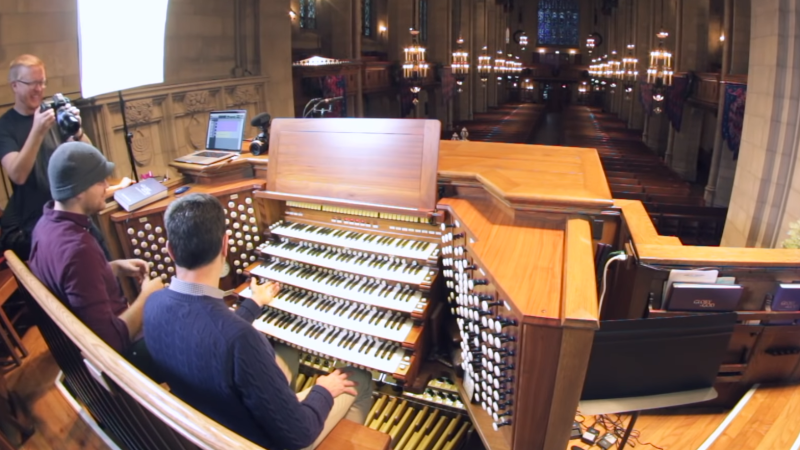Musical instruments come in all shapes and sizes. For sheer scale and complexity though, you can’t beat pipe organs. [Rob Scallon] visited the Fourth Presbyterian Church in Chicago to look at their massive pipe organ which boasts over 8000 individual pipes. He also discovered that it has a MIDI interface, and off course hooked up his laptop to play the Mario Bros theme song.
This organ is actually the third one the church has had, and was completed in 2016. Its capabilities are impressive, but the engineering side of it is what really blew us away. Every pipe is unique to allow it to recreate the sound of almost an entire orchestra, and the “control station” looks a bit like the cockpit of modern airliner in terms of complexity. The organ covers multiple stories across multiple parts of the church and every single pipe and part needs to be accessible for tuning and maintenance, which is almost a full time job. Check out the first video after the break for a full demonstration and tour of this incredible machine by [John Sherer], the church’s music director and organist.
The second video after the break goes through the process of hooking up a laptop to the organ after getting a technician to completely wire up the MIDI interface. They go full music geek as they marry ancient and modern music technology. [Rob] says it multiple times, and we have to believe that you need to be in the building to truly experience the sound. Let us know in the comments if any readers have heard this organ in person.
















I have a great fondness for pipe organs, as the world’s greatest mechanical instruments and hearing one as powerful as this belting out Bohemian Rhapsody is enough to bring a tear to anyone’s eye.
I salute you, sir.
RIP Freddie.
Indeed, now question is, have the surviving members of Queen actually seen this video?
If I had Elon Musk levels of money I’d call up whomever it is that owns Bordwalk Hall in Atlantic City and ask “How much money and whom do you need to get that %#^&* pipe organ up and running 100% ASAP? That much? Where do I send the check? Just one condition, the first two songs played have to be Toccata and Fugue in D Minor, and Funkytown.”
Sadly it WAS working until very recently, when they were upgrading the HVAC the contractors ripped out the bundles of thousands of wires controlling the solenoids going to many of the pipes, which will not be an easy fix. FOrtunately the Wannamaker organ in Philadelphia is still going 100%! Fran from the FranLab on YouTube has a great behind the scenes video on that instrument.
I really want to go see this and bring a good MIDI rendition of Megalovania. That would be phenomenal to hear through an instrument as majestic as this.
One thing that should be pointed out… “this is not a hack”.
Very remarkable results hearing that organ being driven as a MIDI instrument, but fundamentally it’s worth remembering, it was designed to do this, otherwise the MIDI port wouldn’t have been there in the first place.
Wouldn’t surprise me if the keyboards/footboard/stops actually used MIDI internally to communicate with the various valves and shutters that actually drive the pipes.
That said, I don’t think I’ll hear those songs the same way again.
I guess the true hacker here was whoever first thought “Hey, I if we’re going to use digital controls to activate the pipes, I wonder if I could build a MIDI interface for it..?”
Wow guys thanks for a really incredible video about an incredible instrument
About 15 years ago, I worked for a company that built control systems for pipe organs: https://www.organworks.com/
Pipe organs have had MIDI capability for quite some time – Classic Organ Works / Artisan Classic Organs are a member of the MIDI Manufacturer’s Association. I don’t know who built the control system for this particular installation in Chicago, there are a few suppliers in the space.
Richard Audette do some pipe organs have MIDI capability for the stops too? Wouldn’t it be something in this digital age to control an organ like this remotely so it could be hooked up to the internet like many other things are.
Some do, but it depends on how comprehensive the MIDI implementation in the console is. If it does, the data usually can’t be authored directly. It can be captured though. I suspect those stop changes would probably be communicated as MIDI sysex messages.
Absolutely fantabulous!!! Love it :) That would be such a good time :)
I would like to say thanks to the gentleman from the church who was such a talented player of the organ and so enthusiastic to make the MIDI connection work, and make the MIDI music sound wonderful.